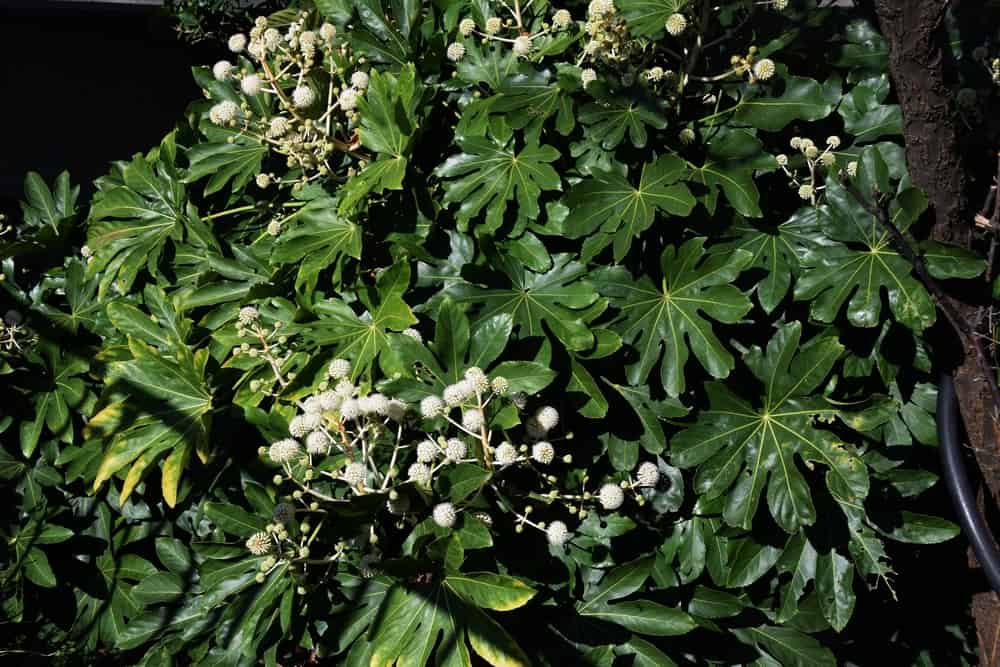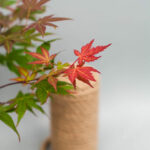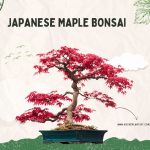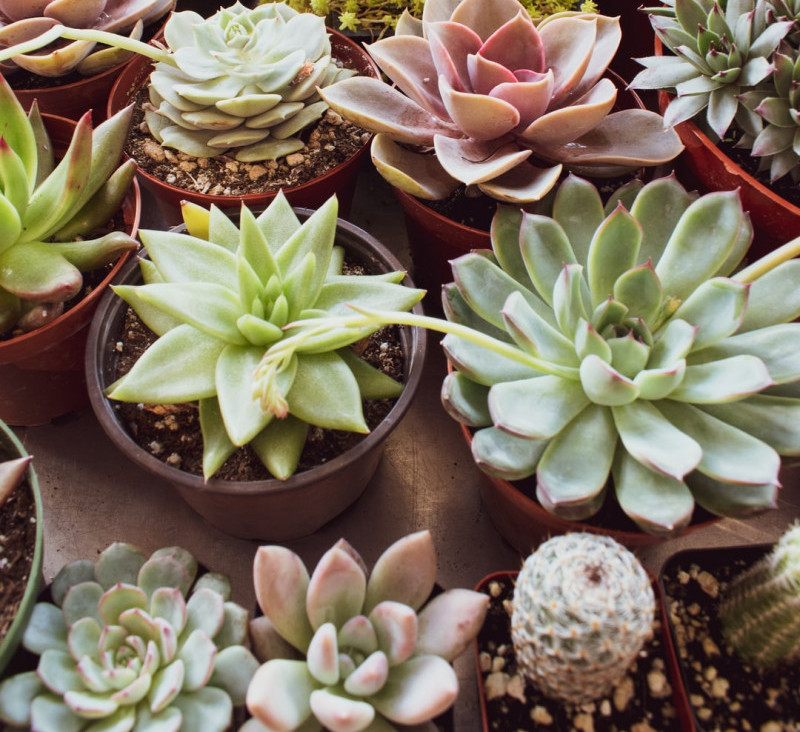HousePlantJoy is supported by our audience. When you purchase through one of our links, we may earn a small affiliate commission. As an Amazon Associate I earn from qualifying purchases. Your cost is not affected.
==================
Looking to add a touch of exotic elegance to your indoor oasis?
Meet Fatsia japonica ‘Spider’s Web,’ a fascinating shade-loving shrub that’s equally at home indoors as it is in your garden. This remarkable plant boasts striking foliage with leaves that resemble nature’s handcrafted artwork, making it a captivating focal point in your home.
Join us as we delve into the world of Fatsia japonica and uncover the secrets to growing this captivating houseplant. From its hardy nature to its intriguing growth patterns, we’ll explore everything you need to know to make your home a haven for this unique and resilient beauty.
So, whether you’re a seasoned indoor gardener or just starting to cultivate your green thumb, let’s embark on a journey to discover the beauty and simplicity of nurturing Fatsia japonica ‘Spider’s Web’ indoors.
Grow Fatsia Japonica As a Houseplant
Grow Fatsia japonica ‘Spider’s Web’ for a gorgeous focal plant in your home.
Fatsia japonica, sometimes called Japanese aralia, is a shade-loving shrub that thrives in moist conditions. It’s usually grown for its outstanding foliage during the growing season. The giant leaves are deeply lobed and grow to nearly a foot wide. Fatsia grows up to 8 feet tall. The white flower clusters appear in fall on mature plants, contributing to the beauty of a mature plant early in its lifecycle. Following them, in the winter, shiny, black fruit appear.
Grow Fatsia japonica
Fatsia likes slightly acid, nutrient-rich, moist soil. Also, it grows best in a shady location.
When stems become spindly or leggy, cut them back. This encourages branching.
With proper conditions, Fatsia proves to be a low-maintenance plant. Also, pests seldom affect them.
Fatsia can be grown in beds or containers both inside and out. It makes a bold addition to a courtyard or patio.
Interesting Fact:
Fatsia japonica and Hedera helix (English Ivy) hybridize to form Fatshedera lizei, also known as x Fatshedera lizei. The x denotes that the two parent plants represent different genus (Fatsia and Hedera). Thus, the resulting plant, Fatshedera, remains sterile.
Introduction to Fatsia Japonica
Fatsia makes a bold landscape effect with broad, deeply lobed, dark green leaves held on stiff stems. It prefers a shady growing area. It might show the best at your home’s entry.
However, consider containers. Although Fatsia often grows large, it performs well in a large container.
Fatsia creates a dramatic effect with upright stems that bend and curve their way to about eight feet tall before their weight causes them to fall horizontally.
In the fall, upright clusters of gorgeous creamy white flowers appear. These flowers attract bees and hummingbirds to their sweet nectar.
Then, toward winter, they produce shiny, black fruit. Though these fruits create an exciting contrast for several weeks, they prove inedible for people. However, birds find them quite attractive.
New sprouts appear toward the base of older stems. Keep them or remove them to create new plants.
General Information
Scientific name: Fatsia japonica Pronunciation: FAT-see-uh juh-PAW-nick-uh
Common name(s): Fatsia
Family: Araliaceae
Plant type: shrub
USDA hardiness zones: 8 through 11
Origin: native to southern Japan, southern Korea, and Taiwan.
Uses: These plants make incredible mass plantings, specimen plants, container plants, or above-ground plantings when grown outside. They also grow very well as houseplants.
Height: 5 to 8 feet
Spread: 3 to 10 feet
Description
Plant habit: upright; round
Plant density: moderate
Growth rate: moderate
Texture: coarse
Foliage
This simple leaf structure shows serrated edges on a palmate, star-shaped leaf. As an evergreen, the color remains green year-round, with no color change during the fall months.
Leaves develop a total length of 8 to 12 inches. They grow in an alternate leaf pattern.
Flower
Fatsia japonica displays beautiful white flowers during the fall months. These attract honey bees and hummingbirds.
bee pollinating Fatsia japonica
Fruit
The fruit of the Fatsia japonica grows into a round shape that is less than 1/2 inch. Covered by a fleshy, shiny-black color, they show distinctly against the green foliage and white flowers. While people should not eat the fruit, it provides essential winter food for native wild birds. Bird watchers enjoy having this plant outdoors near a viewing window.
Trunk and Branches
Trunk/bark/branches: multi-trunked or clumping stems
Stem/twig: Very thick, green stems and twigs
Culture
Light requirement: The plant grows in the shade and avoids full sun
Soil tolerances: slightly alkaline; clay; sand; acidic; loam; poor salt tolerance.
Drought tolerance: moderate
Plant spacing: 36 to 60 inches
Other Notes to Grow Fatsia Japonica
Roots: Roots usually present no problems.
Winter interest: As an evergreen, they pose no special winter issues. However, they do provide essential food for wild birds in the area.
Outstanding: This plant displays distinctive ornamental features, whether planted outside or as a houseplant.
Invasive potential: Although not native to North America, no known invasive tendencies exist for Fatsia japonica.
Pest resistance: They offer high pest resistance. Pests seem to avoid them.
Use and Management
Although challenging and leathery in appearance, the leaves of Japanese Fatsia cannot tolerate sunny locations. It can take some filtered light. However, too much sun can burn the leaves; prolonged exposure will eventually kill the plant. As stems become tall and slim, prune back to increase growth and leaf production on the bottom of the plant. Fatsia will grow in any soil that doesn’t become soggy. As such, it also makes an excellent house plant in a brightly lit area.
The propagation of Fatsia, mainly from Fatsia japonica, is from cuttings that root easily or by seed. But remember to keep them cool during propagation and when growing.
Fatsia can occasionally be bothered by scale or mealy bugs. However, it generally remains free of pests.
Pests and Diseases
Fatsia japonica in flower (fall)
Learn how to successfully grow Ivy Tree (Fatshedera) indoors and bring the beauty of this unique plant into your home. Discover the essential care tips and techniques to help you cultivate a thriving indoor plant, Ivy Tree, creating a lush and vibrant indoor environment.
Video Credit: @SarahBird
Embrace the Exotic in Your Home
As we wrap up our exploration of Fatsia japonica ‘Spider’s Web’ and its role as an enchanting houseplant, one thing becomes clear – this plant brings a touch of the exotic to your living space.
With its vibrant, hand-painted leaves, resistance to pests and diseases, and the flexibility to thrive indoors, it’s an ideal addition to your home garden. Fatsia japonica is not just a plant; it’s a conversation starter, an elegant centerpiece, and a testament to nature’s artistry.
So, whether you’re an experienced plant enthusiast or a newbie in the world of indoor gardening, consider welcoming Fatsia japonica ‘Spider’s Web’ into your home. With its low-maintenance nature and the promise of transforming your space into a lush oasis, this captivating plant is ready to become the star of your home garden.
We hope this journey into the world of Fatsia japonica has inspired you to embrace the exotic in your home and cultivate a living masterpiece that will bring joy, tranquility, and a touch of nature’s wonder to your everyday life. Happy gardening!
Frequently Asked Questions
Is Fatsia japonica 'Spider's Web' suitable for beginners in indoor gardening?
Yes, Fatsia japonica ‘Spider’s Web’ is an excellent choice for beginners. This plant’s hardy nature and resistance to pests and diseases make it relatively low-maintenance. Just provide it with the right light conditions, avoid direct sunlight, and maintain well-draining soil to keep it thriving in your indoor garden.
Can Fatsia japonica be grown in smaller spaces or containers?
Absolutely. Fatsia japonica can adapt well to containers, making it a versatile houseplant for homes with limited space. However, be mindful of its eventual size, and choose a pot that accommodates its growth. Regular pruning can also help maintain its size in smaller spaces.
How do I propagate Fatsia japonica 'Spider's Web' for more plants?
You can propagate Fatsia japonica through cuttings or seeds. For cuttings, take stem sections with at least one node, and root them in a well-prepared growing medium. Keep them in a cool, bright location. Be patient, as it may take some time for roots to develop. Alternatively, you can collect seeds from mature plants, but note that growing from seeds may take longer to establish than using cuttings. Keep a watchful eye on moisture levels during propagation to ensure the best results.
Come Explore Our Verdant Sanctuary on Social Media!
Ready to dive deeper into the world of houseplants? Visit our social media accounts for engaging content, insightful product reviews, and to connect with a vibrant community of plant enthusiasts.
Follow us on Facebook for daily plant inspiration, check out our latest foliage finds on Instagram, discover creative planting ideas on Pinterest, and stay updated on all things houseplants through our tweets on Twitter.
Your indoor garden journey just got even more exciting. Join the Houseplant Joy community today!










